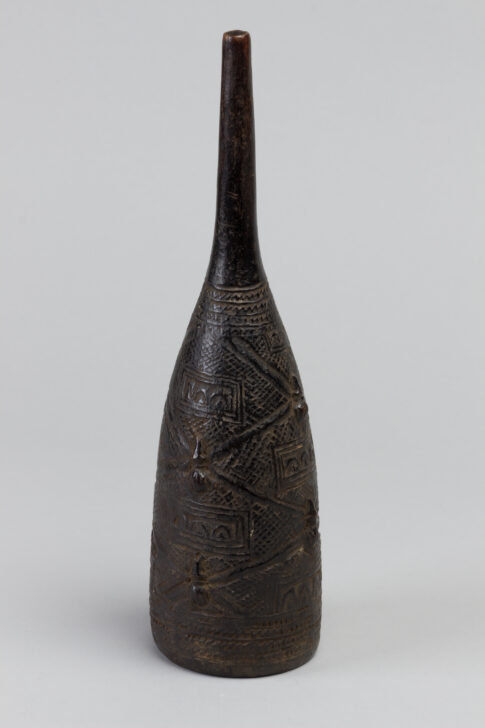Clyster
Kuba

Description
Subject Matter:
Kuba artists applied their bold and sophisticated surface design to both ceremonial and everyday objects alike. Objects such as drums, boxes, stools, backrests, knives, swords, bangles, wisdom baskets, staffs and fly whisks were typically reserved for the king and his courtiers. However, these objects, in addition to cups, rubbing oracles, pipes, combs, drinking horns, ritual spoons, and scepters, also served specific religious and ceremonial functions, or were simply everyday objects for common use.
Clysters were typically used for healing purposes, particularly to administer medicines. The geometric patterns on this clyster resemble patterns often found on Kuba basketry, textiles and female body scarifications.
References:
Daniel Biebuyck, The Arts of Zaire, 1985
Georges Meurant, African Textiles from the Kingdom of Kuba, 1986
Roy Sieber, African Textiles and Decorative Arts, 1972
Jan Vansina, The Children of Woot, 1978
Physical Description:
Hollowed cone-shaped vessel with a thinly tapered, extended tip. Vessel is designed with various geometric shapes including repetitive diamond and square patterns.
Usage Rights:
If you are interested in using an image for a publication, please visit https://umma.umich.edu/request-image/ for more information and to fill out the online Image Rights and Reproductions Request Form.